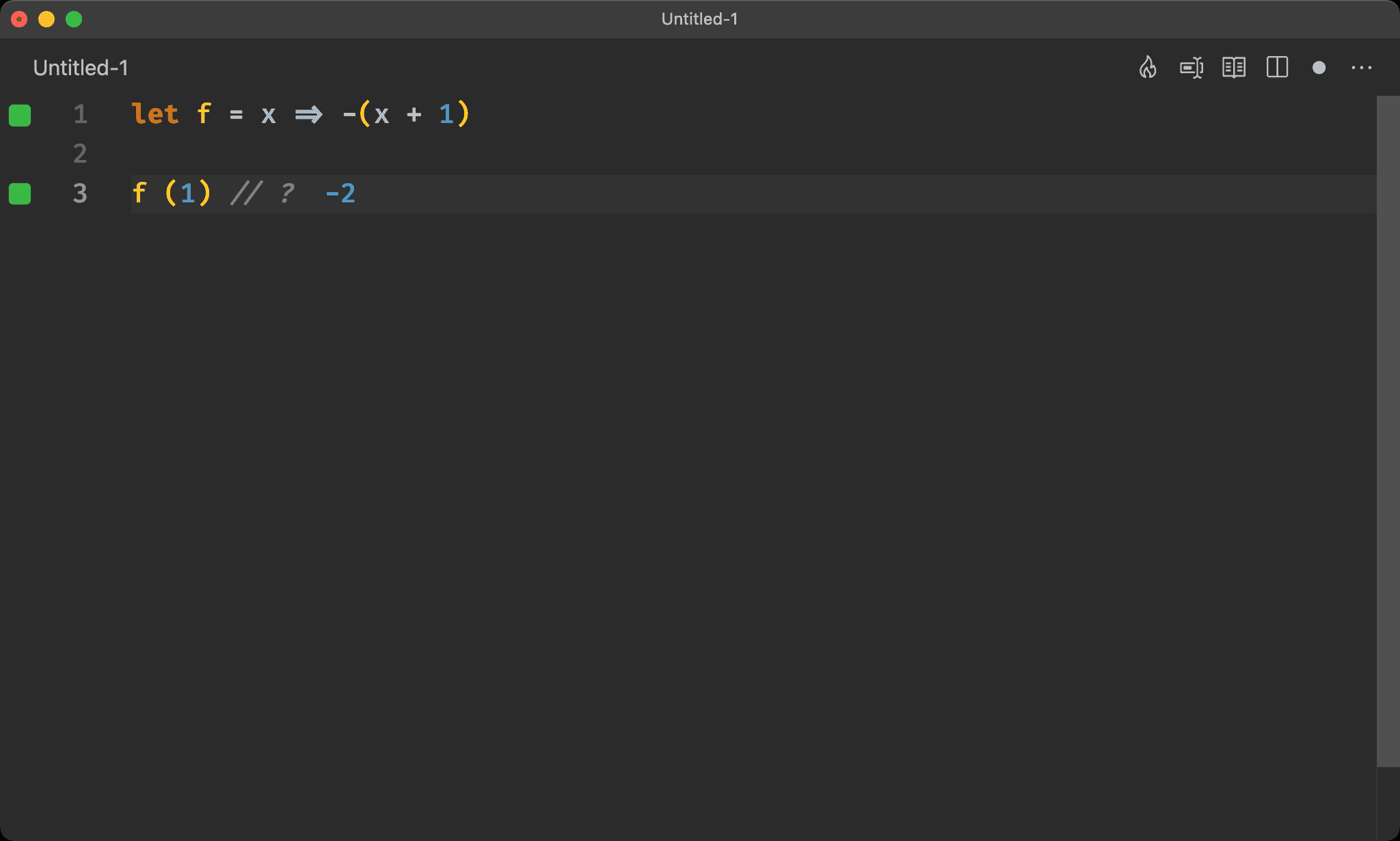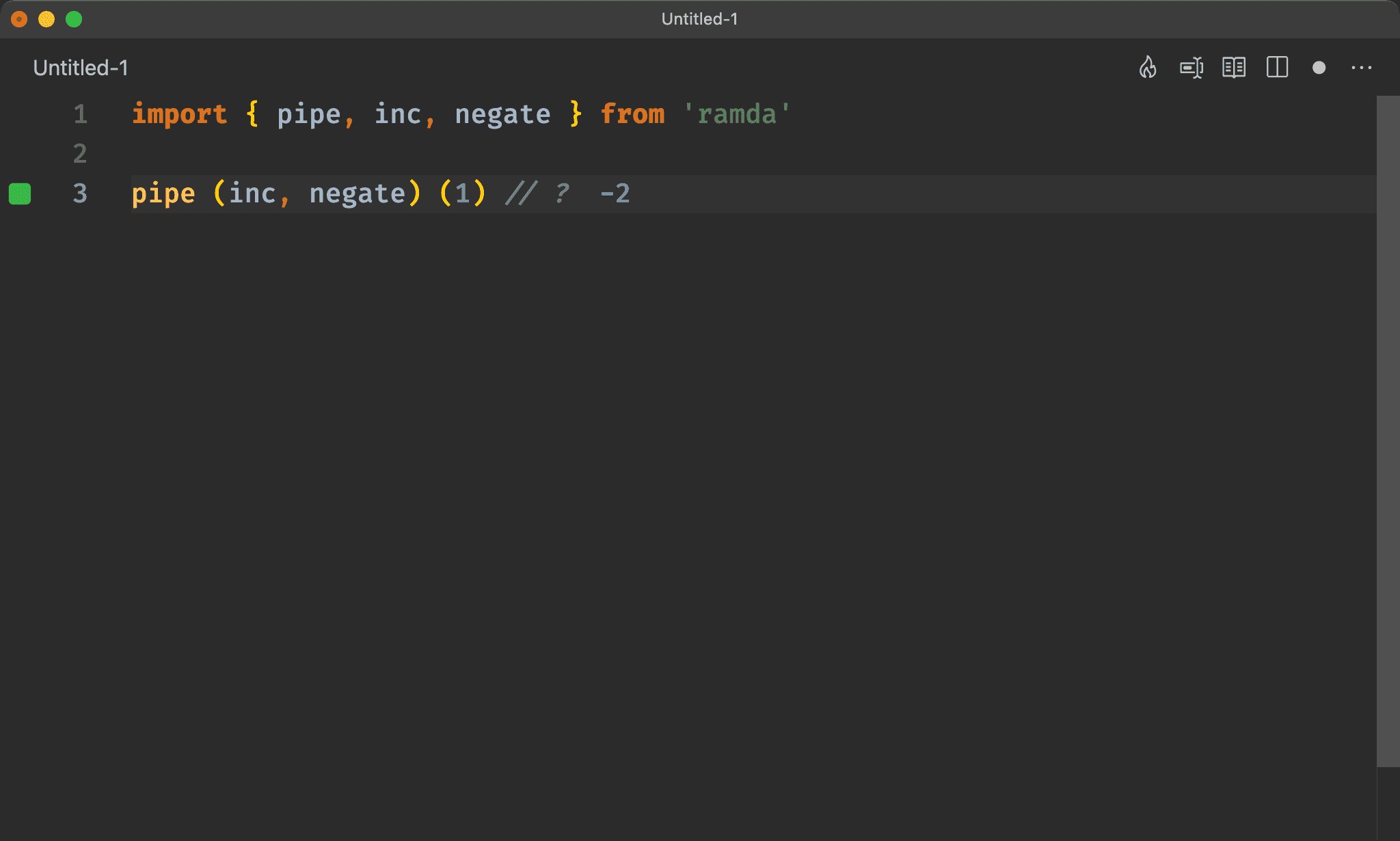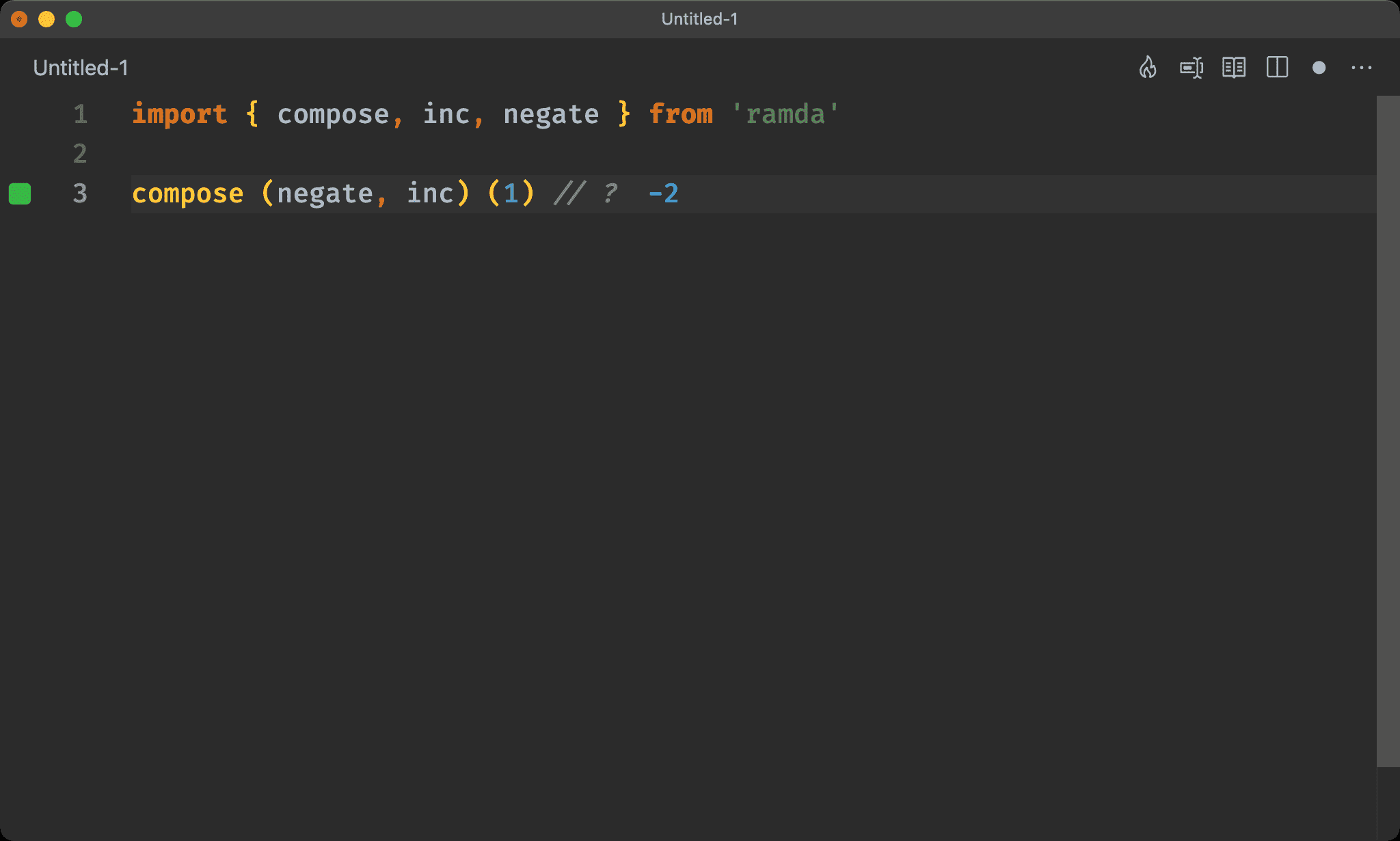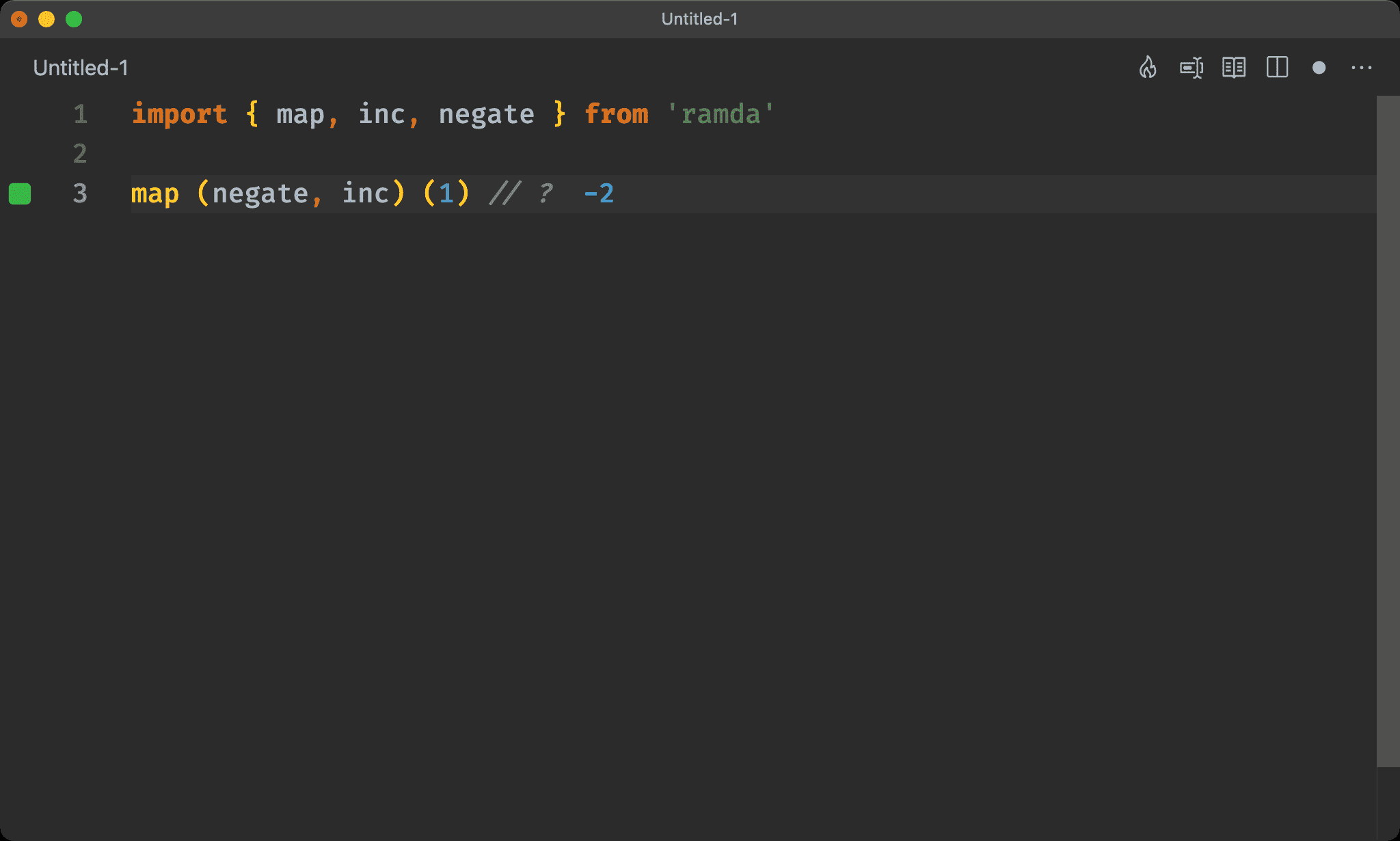map 是 FP 最具代表性的 Higher Order Function,僅管大部分 FP 原則都沒搞得很懂,但 map 一定都用得很熟;大部分人都將 map 用在 Array,但因為 First Class Function,map 也能將兩個 Function 綁定。
Version
Ramda 0.27.1
Imperative
let f = x => -(x + 1)
f (1) // ?
f 將兩個 argument 相加並取負號,可使用 + 與 - operator 實現。
這個 function 就功能而言 100% 沒問題,但能否更進一步 Point-free 呢 ?

pipe
import { pipe, inc, negate } from 'ramda'
pipe (inc, negate) (1) // ?
直覺會使用 pipe 組合 inc 與 negate。

compose
import { compose, inc, negate } from 'ramda'
compose (negate, inc) (1) // ?
既然能用 pipe 就能使用 compose,pipe 是 由左到右 執行,而 compose 是 由右向左 執行。

map
import { map, inc, negate } from 'ramda'
map (negate, inc) (1) // ?
跟 compose 寫法長得好像喔,只是將 compose 換成 map,難道 map 等於 compose ?
map
Functor f => (a → b) → f a → f b
傳入 unary function 改變 Functor 內部 value
這是 map 的定義,注意 Ramda 從來都沒說第二個 argument 是 Array,而是說它是個 Functor。
Array 是 Functor,function 也是 Functor,所以也能將 function 用在 map。
簡單來說,支援
map的 Object 就是 Functor,而 function 本身就是一種 mapping,所以 function 可以視為 Functor
使用 map 將 inc 與 negate 綁定相當於使用 compose 對 inc 與 negate 組合。
事實上在 map 官網,最後一句話就是
Also treats functions as functors and will compose them together.,只可惜微言大意,並沒有更進一步的範例,因此很容易忽略

Conclusion
pipe是由左向右,而compose是由右向左,兩者可等價替換- 若只
compose兩個 function,可等價使用map替換,因為 function 也是 Functor,使用map將兩個 function 綁定,等效於使用compose組合兩個 function